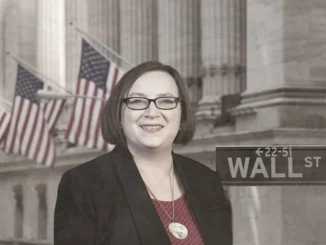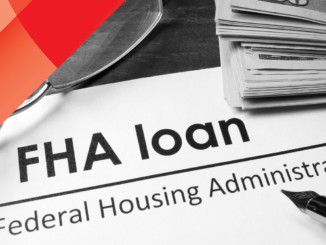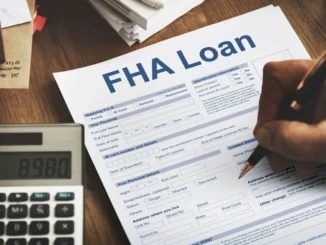
The Federal Housing Finance Agency (FHFA) officially implemented an updated pricing framework for Loan-Level Price Adjustments (LLPAs) in May to improve homeownership prospects for first-time homebuyers with lower income and weaker credit scores. It’s a simple goal, but as is often the case in U.S. housing policy, it is being executed in a very complicated manner.
The changes, which sparked a Culture Wars debate, reduce or eliminate LLPA fees for first-time homebuyers and those with low and moderate incomes, and raise fees on most borrowers with credit scores of 720 and 759 and down payments of between 10 and 20%.
There’s been a lot of misinformation about the changes, so let’s be clear: it still costs more to have a lower credit score, and borrowers with higher FICO scores are less penalized than those with lower scores; one way to think about it is that lower FICO borrowers aren’t being penalized as much as they had in the past. The FHFA also argues that the targeted fee eliminations based on income, not credit score, are primarily supported by higher fees on loans for second homes, investment properties and cash-out refinancings.
While the debate about cross-subsidization, the politicization of the agencies and whether we even need LLPAs rages on, we wanted to look at the practical implications of the FHFA courting borrowers at the bottom rungs of the pricing matrices and making it more expensive for other prospective borrowers.
Are low-FICO, first-time homebuyers better off with a conventional mortgage and reduced LLPA fees, or an FHA loan with none at all? We spoke to multiple loan officers and Washington, D.C.-based think tank Urban Institute to hear their takes.
MIP cuts and LLPA cuts
Because an FHA loan requires lower minimum credit scores and a required down payment as little as 3.5%, they are especially popular with first-time homebuyers. While the FHA loan allows a borrower to put less money down and doesn’t come with LLPAs, that flexibility comes with a high upfront and annual costs in the form of mortgage insurance premiums (MIP).
In March, FHA Commissioner Julia Gordon made it a little cheaper. She announced that the agency would be reducing annual mortgage insurance premiums by 30 basis points to 55 bps, reducing costs for already-stretched borrowers as home affordability hit an all-time low.
It’s not a huge cut, but it’s enough to tip the scales in favor of FHA loans for some borrowers even with the LLPA reductions on conventional loans, several LOs told HousingWire. Borrowers with low- and moderate incomes and lower FICO scores will still pay more for a conventional mortgage after factoring in PMI costs that are triggered for borrowers putting down less than 20%, the LOs said.
“The real issue is that with these adjustments, these 660 FICO borrowers with 5% down, they’re going to end up going FHA because not only is their rate going to be higher on the conventional loan, their mortgage insurance costs are going to substantially higher than FHA,” a production manager in Northern California said.
Of course, every borrower’s financial situation is a little different and the new LLPA changes will add borrowers for whom conventional lending is marginally more attractive than getting a FHA loan, said Janneke Ratcliffe, vice president of Housing Finance Policy Center at Urban Institute.
“That used to be [the case] for nobody with LTV above 95 based on our calculations, but now the people with the very highest credit scores will have a breakeven choice with FHA vs conventional GSE loans,” Ratcliffe said.
For example, borrowers with credit scores of 760 and above and an LTV of over 95% will continue to be better off or basically breakeven between an FHA and GSE loan with a 35% private mortgage insurance (PMI), according to the Urban Institute’s analysis.
“If you’re at 740 FICO and a 95% LTV, it’s a $5 difference,” Ratcliffe noted.
The changes are marginal enough to be absorbed in a lender’s pricing strategy or other variables could make up for the difference, she explained.
LLPAs are waived for Fannie Mae‘s HomeReady and Freddie Mac‘s HomePossible loan borrowers; and loans to first-time homebuyers with qualifying income that is or below 100% area median income (AMI) or 120% AMI in high-cost areas.
Excluding the first-time buyers who are waived from LLPA fees, no new groups of borrowers will get a clearly better execution with FHA after the changes.
Some will move to more of an “either way” place, so that lender decisions around pricing can more make the difference for these. “People should shop, right?” Ratcliffe added.
In 2022, only 7.6% of purchase loans that Fannie Mae closed were above 95% LTV, according to the Urban Institute. This category of borrowers has historically been the sweet spot for the FHA.
Brian Parkinson, loan originator at Alerus Mortgage pointed to the possibility of Fannie Mae and Freddie Mac trying to bridge the gap between FHA mortgages serving minority clients and conventional loans for lower credit score borrowers.
“We also find that FHA mortgages serve minority clients in a higher percentage than conventional mortgages for lower credit scores. I don’t know if Fannie Mae and Freddie Mac are trying to bridge that gap,” Parkinson said.
There are various other reasons, besides pricing, why high LTV borrowers with high credit scores don’t take FHA loans, but many of them are better off after May 1, according to Ratcliffe.
“It’s all about (home) equity, that’s a big buzzword in Washington these days,” Bob Yopko, mortgage broker at First Equity Residential Mortgage, said.
But whether low credit score borrowers with a low down payment would be approved for a conventional loan by the GSEs is another question, Yopko noted.
“They haven’t forgotten what they did in 2008, where basically, everybody could get a loan and they’re not doing that again. They’re trying to protect their portfolios and make good loans. At the same time, trying to be fair to first-time homebuyers. So it’s kind of a mixed message,” he explained.
While FHA loans have favorable rates for borrowers, they are often shunned by listing agents in competitive markets — which in turn makes conventional loans more appealing to borrowers.
With the limited inventory, real estate agents are going to lean towards a $200,000 conventional loan rather than a $200,000 FHA loan “because of some of the ticky tacky things and FHA appraisers may call out,” Don Bleuenstein, president at Gem Home Loans, said.
With the changes hardly benefiting a new group of first-time borrowers, Parkinson noted this is when the loan officers’ skills and knowledge come in to figure out the best option for the borrower.
“All of this stuff has to be sifted through with the mortgage professional to figure out what’s the best program, and what program do we need to use to have a successful accepted purchase offer. That’s what gets tricky.” Parkinson said.



